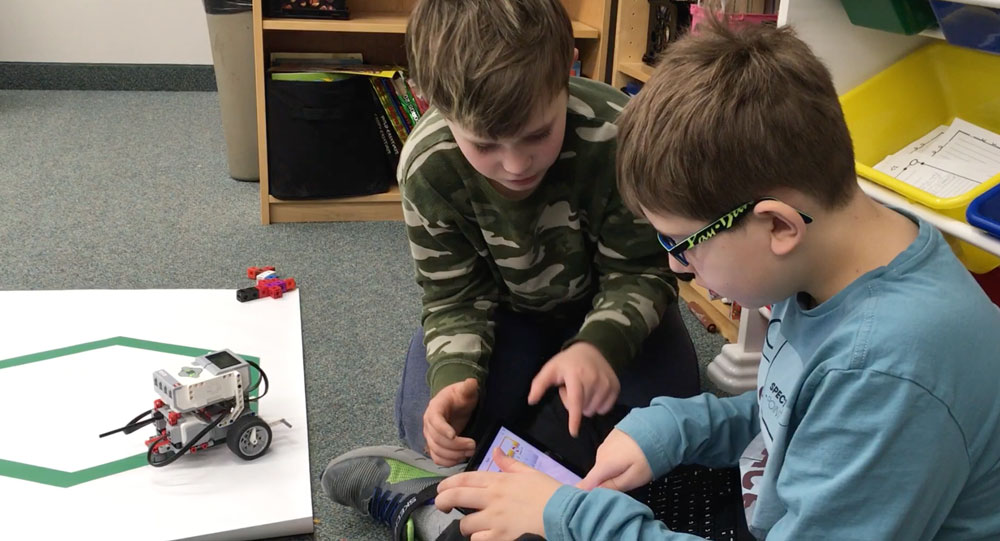Please click HERE for a printable version of this page.
Task Description

The challenge is to program the robot to trace the polygon. Programming the robot to follow a regular polygon reinforces understanding of the properties of 2D shapes and incorporates measurement of distance and angles in terms of wheel rotations, which requires multiplication and proportional thinking. It also helps with learning number sense.
Materials Needed
- You can use tape for marking a polygon on floor
- Basic EV3 robot built from the instruction manual (no sensors needed)

- Alternatively, use Polygon Mats. We have four different shapes available. We recommend printing the mats on smooth vinyl, using a 3′ x 3′ format. Estimated cost: CAD 50 per mat.
- Please find copies of the mats in standard resolution HERE:
Mat 1, Mat 2, Mat 3 and Mat 4,
and high-resolution copies HERE:
Mat 1, Mat 2, Mat 3 and Mat 4 (7.5 MB each).

Key Understandings
- Relates length of polygon side to robot’s wheel rotations by estimating measurement and movement
- Relates angle of polygon to robot’s wheel rotations by estimating measurement and movement
- Translates measurements into programming code to move a robot a specific distance and turn a specific angle
Advanced Understanding of Programming Code
Students start using a loop program for the robot to trace out a regular polygon.
If you would like any further information on number sense and how it can be learnt using robots, please read:
Francis, K., & Poscente, M. (2016). Building number sense with Lego® robots. Teaching Children Mathematics, 23(5), 310–314. https://doi.org/10.5951/teacchilmath.23.5.0310
Please click HERE for a printable PDF of this page.
© 2022 Dr. Krista Francis & Stefan Rothschuh


Recent Comments